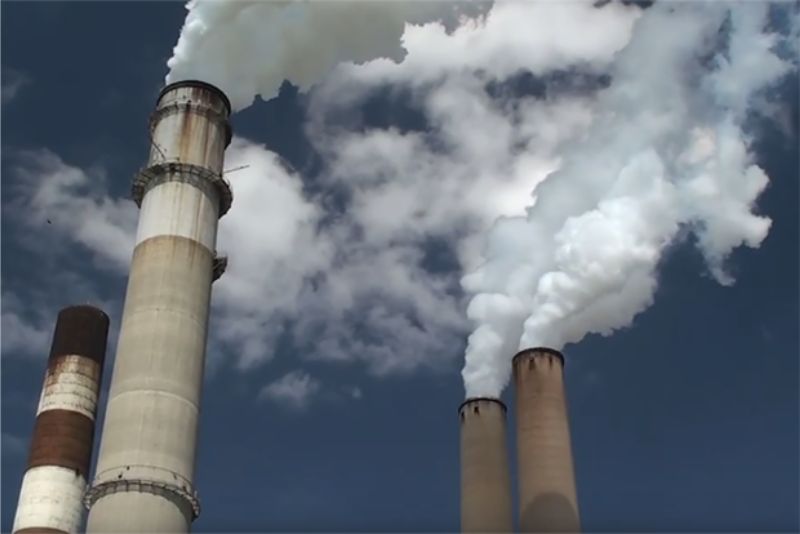Transforming Carbon Dioxide for Power Generation
MIT and Harvard University researchers are investigating a novel method for converting carbon dioxide. Their innovative approach transforms CO2 into potassium or sodium formate, offering a stable and non-toxic alternative to conventional carbon-derived products.
Working to extract carbon dioxide (CO2) from the atmosphere or industrial emissions and transform it into valuable, stable fuels heralds a promising solution in combating climate change and transforming energy landscapes.
Industrial emissions. Image used courtesy of NOAA
MIT and Harvard University researchers have developed a more promising concept for CO2 extraction. The process converts CO2 into a stable fuel suitable for replacing fossil fuels in specific applications.
Carbon Dioxide to Formate
Most CO2 conversion methods encounter challenges such as low carbon efficiency or the creation of difficult-to-manage and potentially hazardous or flammable fuels.
This Massachusetts-based research team has created a highly effective method to transform carbon dioxide into formate – a versatile material in liquid or solid state. The manufactured formate is a viable alternative to hydrogen or methanol for powering fuel cells to generate electricity.
Potassium or sodium formate is non-toxic, non-flammable, easily stored, and transportable, reducing some of the typical challenges of CO2 conversion. Notably, it can maintain stability in regular steel tanks, remaining usable for months, or even years, after its initial production.
The capture and electrochemical conversion of CO2 to solid formate powder has been successfully showcased at a small laboratory scale. However, the researchers are optimistic that formate fuel cells could one day supply homes or grid-scale applications with emissions-free heat and power.
Superior Gas Conversion
Conventional methods for converting CO2 into fuel typically follow a two-step process. First, the gas is chemically captured and transformed into a solid form like calcium carbonate, and then the material is heated at a later stage to release the CO2 and convert it into a fuel source. However, this second step is generally inefficient, converting less than 20 percent of the CO2 gas into the end product.
This new method attains a superior conversion rate of over 90 percent by bypassing the need for an ineffective heating stage by initially transforming CO2 into a liquid metal bicarbonate as an intermediate form. This liquid undergoes an electrochemical conversion in an electrolyzer – powered by low-carbon electricity such as nuclear, wind, or solar power – to produce liquid potassium or sodium formate.
Converting liquid metal bicarbonate with electrolysis. Image used courtesy of Cell
Through this conversion method, the research team creates a highly concentrated liquid solution of potassium or sodium formate, which can undergo drying methods, such as solar evaporation, to yield a stable solid powder.
This powder, known for its high stability, can be stored in regular steel tanks for decades after the initial manufacturing.
A Novel CO2 Conversion Process
The team employed several refinements to their process that were pivotal in transforming an inefficient chemical conversion process into a viable and practical solution.
A few unwanted characteristics of typical CO2 conversion were mitigated in this new process: short shelf-life, stability, toxicity, and unnecessary side reactions.
The solid formate crystals have a high stability that allows them to be stored for years or decades without significant decay. Formate is also considered a benign substance by national safety standards, posing little to no risk compared to other CO2-converting methods such as methanol.
Process of converting CO2 into formate. Imaged used courtesy of Cell
They addressed the challenge of unwanted side reactions generated from non-beneficial chemical byproducts by introducing an additional layer of bicarbonate-enriched fiberglass wool, which acted as a buffer to obstruct unwanted reactions.
Regarding the overall efficiency of the process, a meticulous design of the membrane materials and their arrangement addresses a persistent issue encountered in prior iterations of similar systems. In previous attempts, the accumulation of specific chemical byproducts altered the pH levels, leading to a gradual decline in the system’s efficacy.
Maintaining prolonged, consistent conversion of the feedstocks proved to be challenging. The system's success hinges on achieving a stable pH balance for continuous conversion at a steady rate.
The researchers utilized thermodynamic modeling to engineer the new process for chemical equilibrium, ensuring a consistent pH level without any gradual change in acidity.
This design allows for sustained efficient operation over extended durations. The system ran for over 200 hours without a noticeable decline in output.
Scalability
The team designed a fuel cell to utilize their formate fuel to generate electricity efficiently.
Stored formate particles are easily dissolved in water and then supplied to the fuel cell as required. Despite the solid fuel's higher weight than pure hydrogen, when factoring in the weight and volume of the high-pressure gas tanks required for hydrogen storage, the outcome results in nearly equivalent electricity output for a specific storage volume.
The researchers suggest that formate fuel holds promise for various applications, from household units to large-scale industrial or grid-scale storage systems. In initial domestic settings, an electrolyzer unit approximately the size of a refrigerator could capture and convert carbon dioxide into formate.
This formate could be stored in an underground or rooftop tank. The solid powder would be blended with water and supplied to a fuel cell to deliver power and heat when required.
While initially created for communities or households, the research team believes this technology can be scaled for potential applicability in future industrial settings or grid systems.









